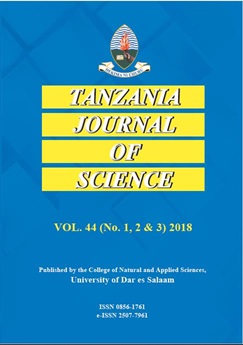Evaluation of the Potential of Freshly Bred Orange-Fleshed Sweet Potato Varieties in Combating Vitamin A Deficiency
Abstract
Orange-fleshed sweet potato (OFSP) is advocated as a rich and readily accessible source of vitamin A. This study was done to evaluate the potential of the newly bred OFSP varieties in combating vitamin A deficiency. OFSP varieties and white fleshed sweet potato (WFSP) varieties were used for the study. β-carotene was extracted with acetone and its spectrophotometric reading at 450 nm used to calculate its concentration. The optimum amount of OFSP required to meet vitamin A needs for children of different age groups were established. Results indicate that βcarotene was below detection levels in WFSP varieties but was detectable in OFSP varieties regardless of the processing treatment. The concentration varied significantly (P < 0.05) between OFSP varieties and between processing treatments. The reduction rate of β-carotene varied with processing treatments and was much higher in fried potatoes (3.2 €“37.1%) than boiled potatoes (19.6 €“ 21%). This implies a higher retention rate of β-carotene (78.97% €“ 80.44%) in boiled than fried OFSP varieties (62.88% €“ 67.83%). The optimum amount of OFSP (g/day) required to meet +vitamin A requirements for 7 €“12 months to 10 €“13 years varied from 98.91 and 144.27 g/day to 148.36 and 216.41 g/day for Kiegea and Mataya cultivars (OFP varieties), respectively. The results provide an insight of the richness of OFSP varieties in β-carotene and its great potential in preventing vitamin A deficiency.Keywords: Children; Age groups; β-carotene; Vitamin A requirements; Processing treatments


